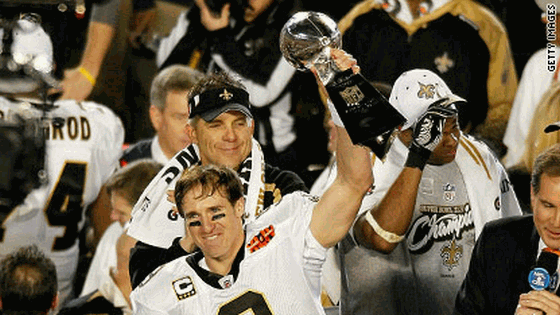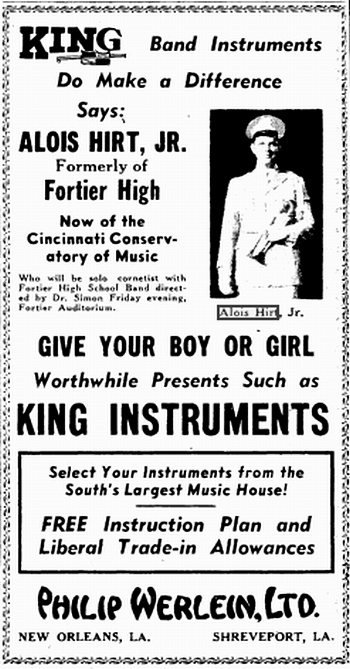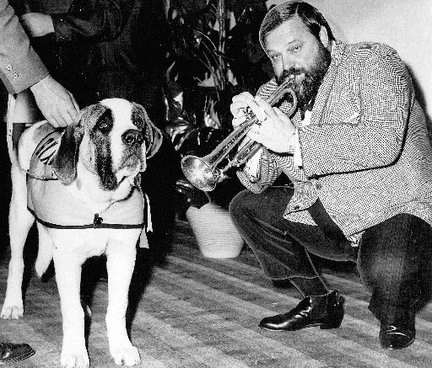|
Today in New Orleans History |
|
|
February 7



 

To receive an update for each day in New Orleans
history, join our facebook page
- Today in New Orleans History
Shepherd Brown, a native of Virginia, arrived in New Orleans in 1800 as an associate of Baltimore merchant
William Taylor. Brown was also associated with two other Taylor colleagues, William O. Payne and John McDonogh. When their
firm, McDonogh and Payne, dissolved in August, 1802, McDonogh and Brown launched two new ventures John McDonogh, Jr. and Company,
and Shepherd Brown and Company. The former entity more or less continued the activities of the old firm, selling imported
products. The Brown company meanwhile pursued the newly developing western trade, purchasing agricultural products from up
river for eventual transshipment to eastern markets. The relationship of McDonogh and Brown with William Taylor broke down
during early 1805. In February of that year Shepherd Brown and Company was dissolved due at least in part to Brown's ill
health. Following his retirement from the mercantile business, he concentrated on real estate and also held several governmental
positions as well as membership on the board of the branch bank of the United States. Shepherd Brown died in Baltimore on
February 7, 1818.(NOPL) Born in New Orleans on November 7, 1922, Alois Maxwell Hirt, son of NOPD officer
Alois Sr. and Linda Goupe, grew up at 1643 Mandeville Street. He began earning musical awards for his trumpeting acumen
while a student at Jesuit and Fortier. He played in the Junior Police Band with the children of Alcide Nunez,
and by the age of 16, was playing professionally, often with his friend Pete Fountain. During this time, he was
hired to play at the Fair Grounds, beginning a six-decade connection to horse racing. In 1940,
he studied at the Cincinnati Conservatory of Music with Dr. Frank Simon (a former soloist with the John
Philip Sousa Orchestra). Hirt is pictured on the right at age 18 in an advertisement for Werlein's on December 18,
1940. After a stint as a bugler in the United States Army during World
War II, Hirt performed with various Swing big bands, including those of Tommy Dorsey,
Jimmy Dorsey, Benny Goodman, and Ina Ray Hutton. In 1950, he became first trumpet and
soloist with Horace Heidt's Orchestra. Upon his return to New Orleans, he worked with
various Dixieland groups and lead his own bands including Al Hirt's Dixieland Band -- of which Pete Fountain
was a member until taking a job in the late 1950s to be on the cast of the Lawrence Welk Show. During the early 50s, he was
on staff as the orchestra leader for WWL. During the 50s and 60s he was a regular at Pier 600 on Bourbon at St. Louis Street.
In 1962 Hirt opened his own club on Bourbon Street in the French Quarter, which he ran until 1983.
His fame was growing and he was sometimes called "Gabriel of the South". In 1958 he
and Fountain appeared together on the Lawrence Welk show. On August 12, 1960, Al Hirt and his Swingin' Dixie's
were featured at Jazz Fest. On February 26, 1961 he and his band played on the Dinah Shore Show. He
was now being called "King of Trumpets". Twenty two of his albums were on the Billboard
charts in the 1950s and 1960s. The albums Honey In The Horn and Cotton Candy were both in the Top
10 best sellers for 1964, the same year Hirt scored a hit single with his cover of Allen Toussaint's
"Java" (Billboard No. 4), and later won a Grammy Award for the same recording. Both Honey in the
Horn and "Java" sold over one million copies, and were awarded gold discs. He recorded the theme for
the 1960s TV show "The Green Hornet", which re-gained public attention in 2003 when it was used in
the film Kill Bill. In 1967 Hirt became one of 18 minority owners (Hirt had
2.5%) of our brand new NFL expansion team, the New Orleans Saints. He is pictured (left) on September
12 1967 playing to Gumbo, the Saints' mascot, at a Jung Hotel luncheon for coaches and players before the kickoff
of the first season. Gumbo had been a gift to the team by the Louisiana Restaurant Association. Hirt was the musical
director for the Saints and played the National Anthem at the first season game, five days later on on September 17.
Hirt became a fixture at Saints games,playing his horn for fans as often as possible. Gumbo's descendant, Gumbo IV was fired
in November 1985, now replaced by a human dressed in a St. Bernard costume. The photograph is by J.W. Guillot/Times-Picayune
archives. On February 7, 1970, while riding in the Bacchus parade, he
was struck by a hurled brick, rock, or cement chunk (sources vary) which left him bleeding profusely and the needing 12 (or
16, sources vary) stitches across the entire underside of his upper lip. He was taken from the float, rushed to Baptist Hospital,
treated, and then attended the krewe's ball at the Rivergate the same evening. He was forced to cancel two upcoming
performing commitments and await the healing process to know if he would ever be able to play the trumpet again as he did
in the past. His career was seriously threatened and the public was outraged, calling for the end this sort of violence
that had occured at many other parades during that Carnival season. The story made national news. This incident was
parodied in a Saturday Night Live skit from their second season Mardi Gras special, the "Let's Hit Al Hirt
in the Mouth with a Brick Contest" |
|
|

To receive an update for each day in New Orleans history,
join our facebook page - Today in New
Orleans History.
Analytics |


 "Jumbo" and Gumbo
"Jumbo" and Gumbo
